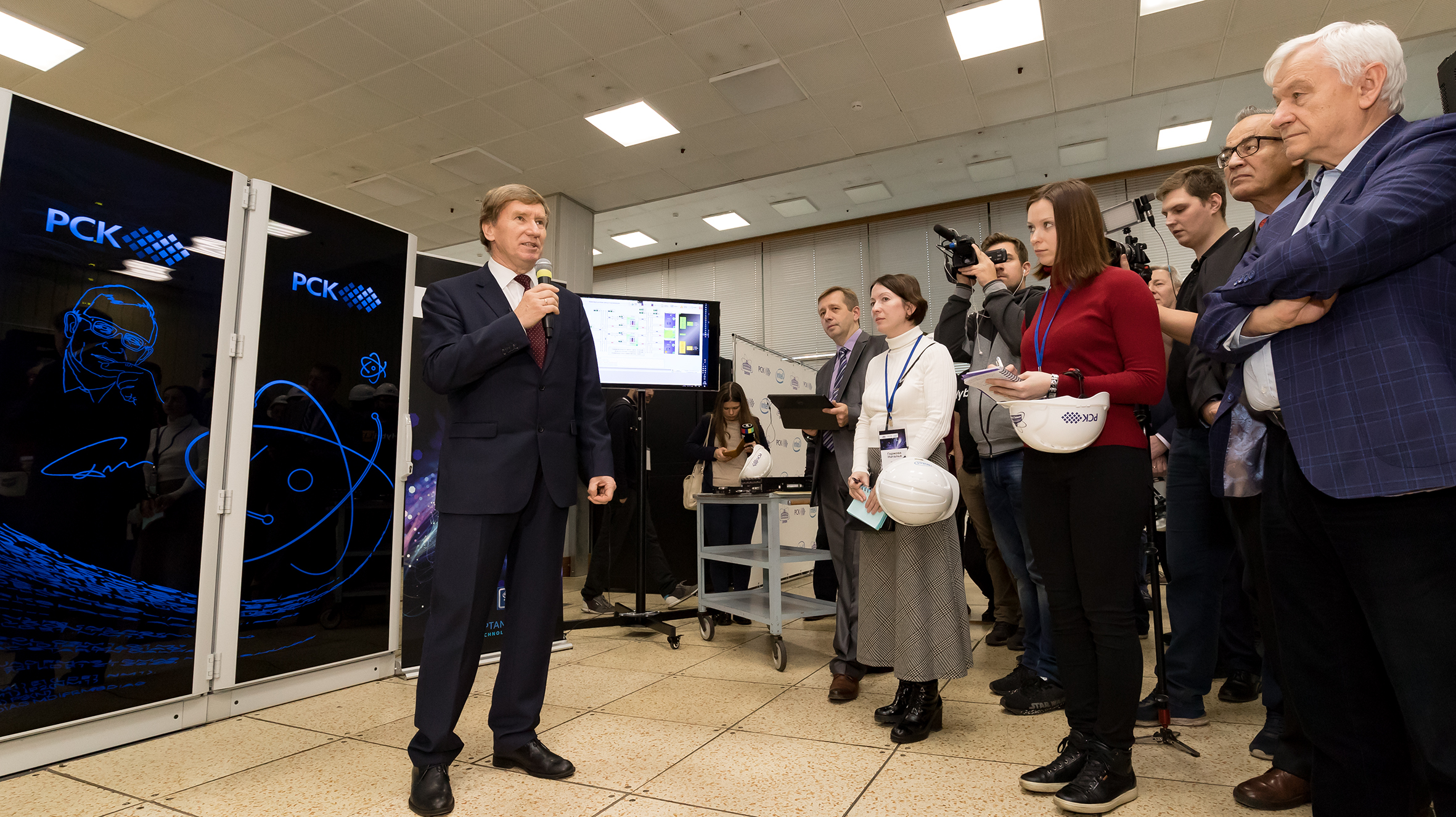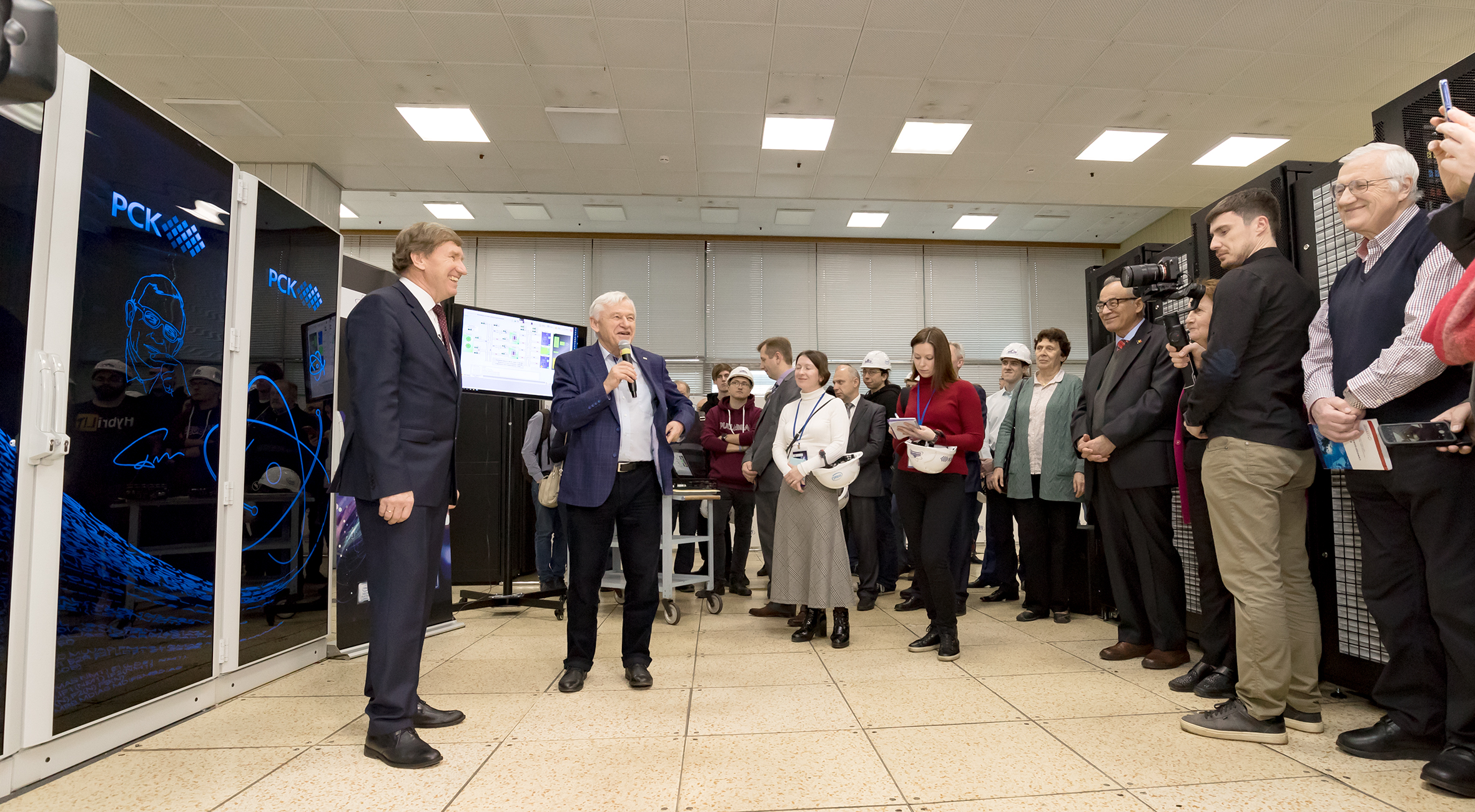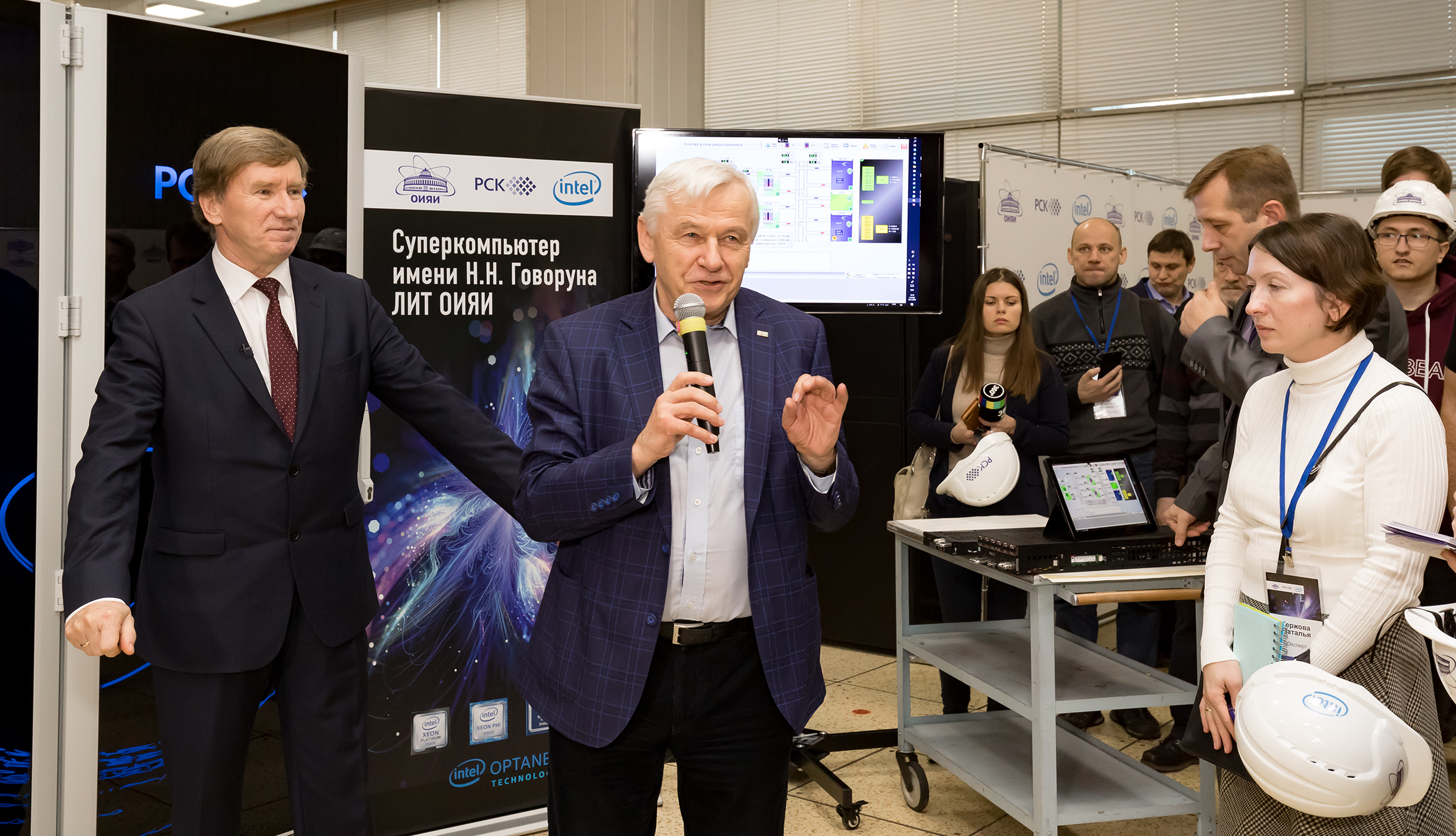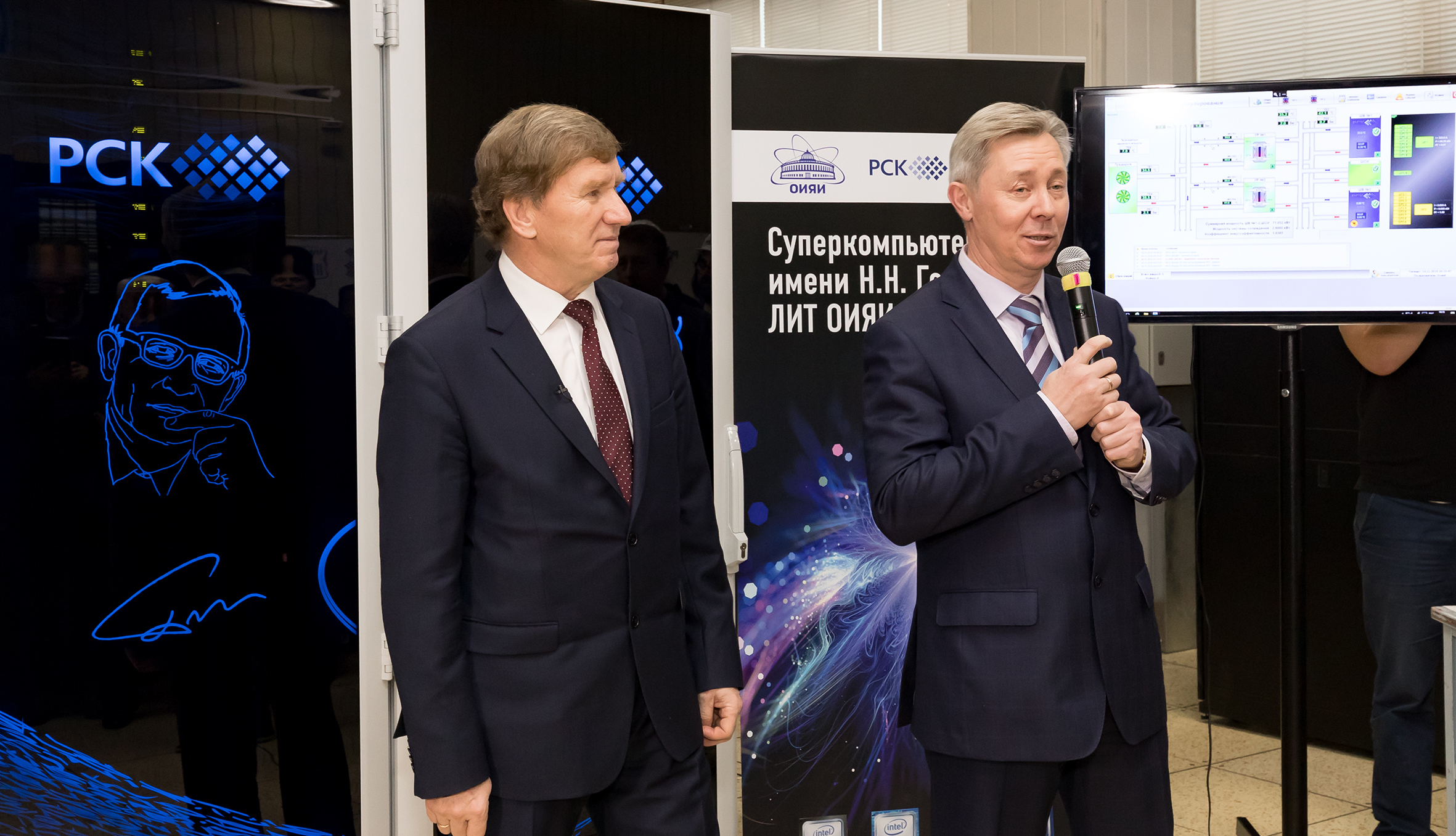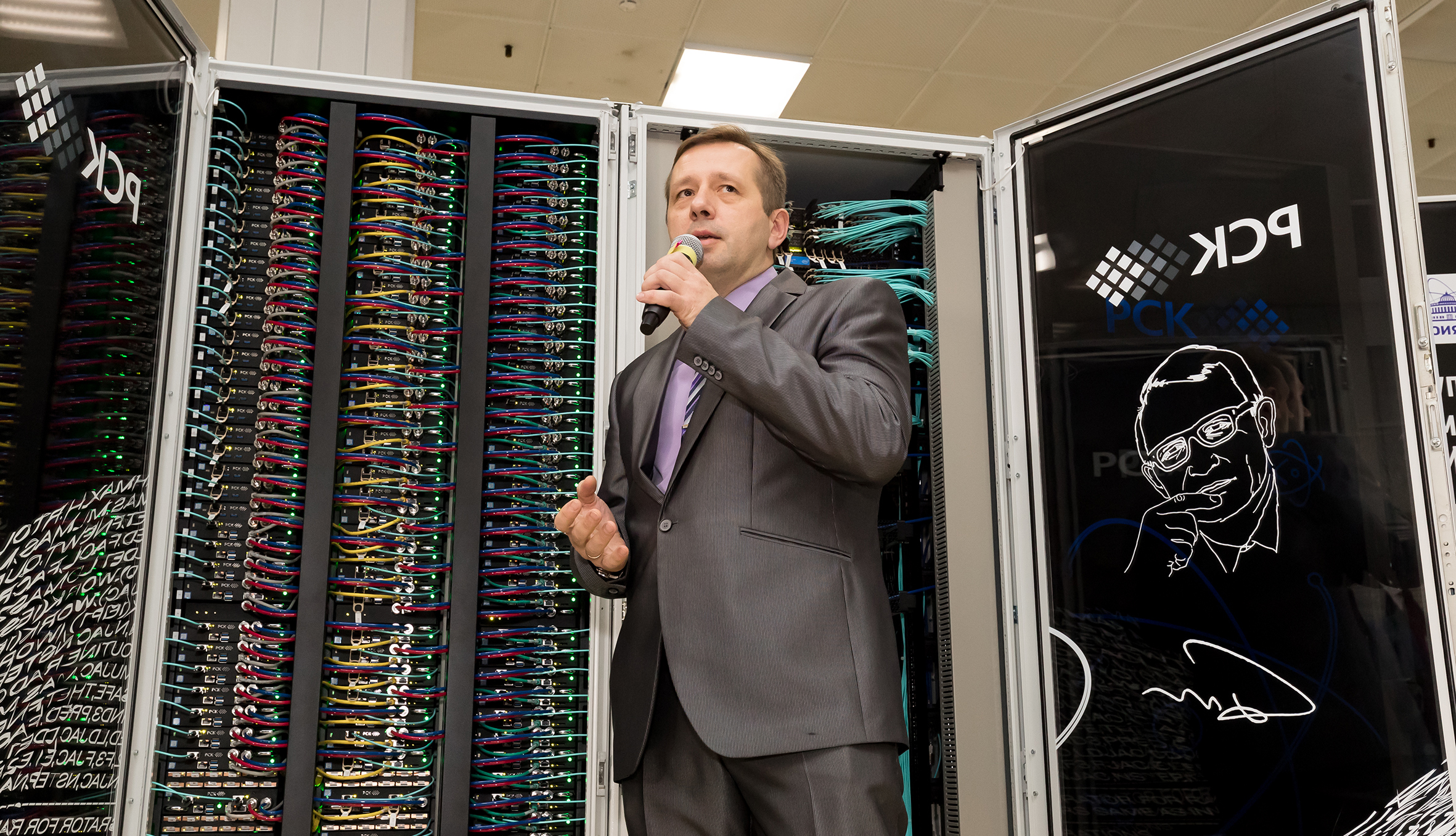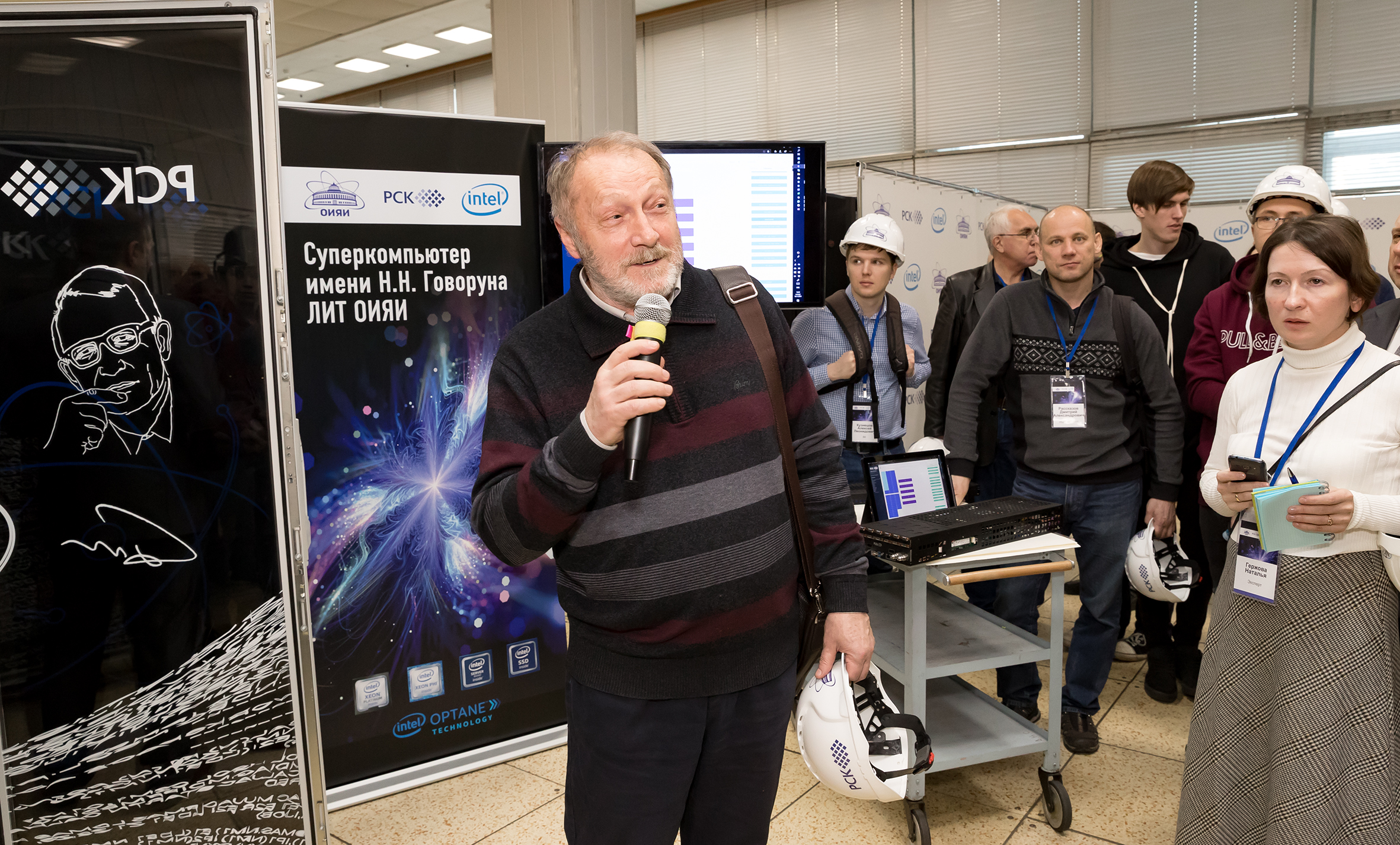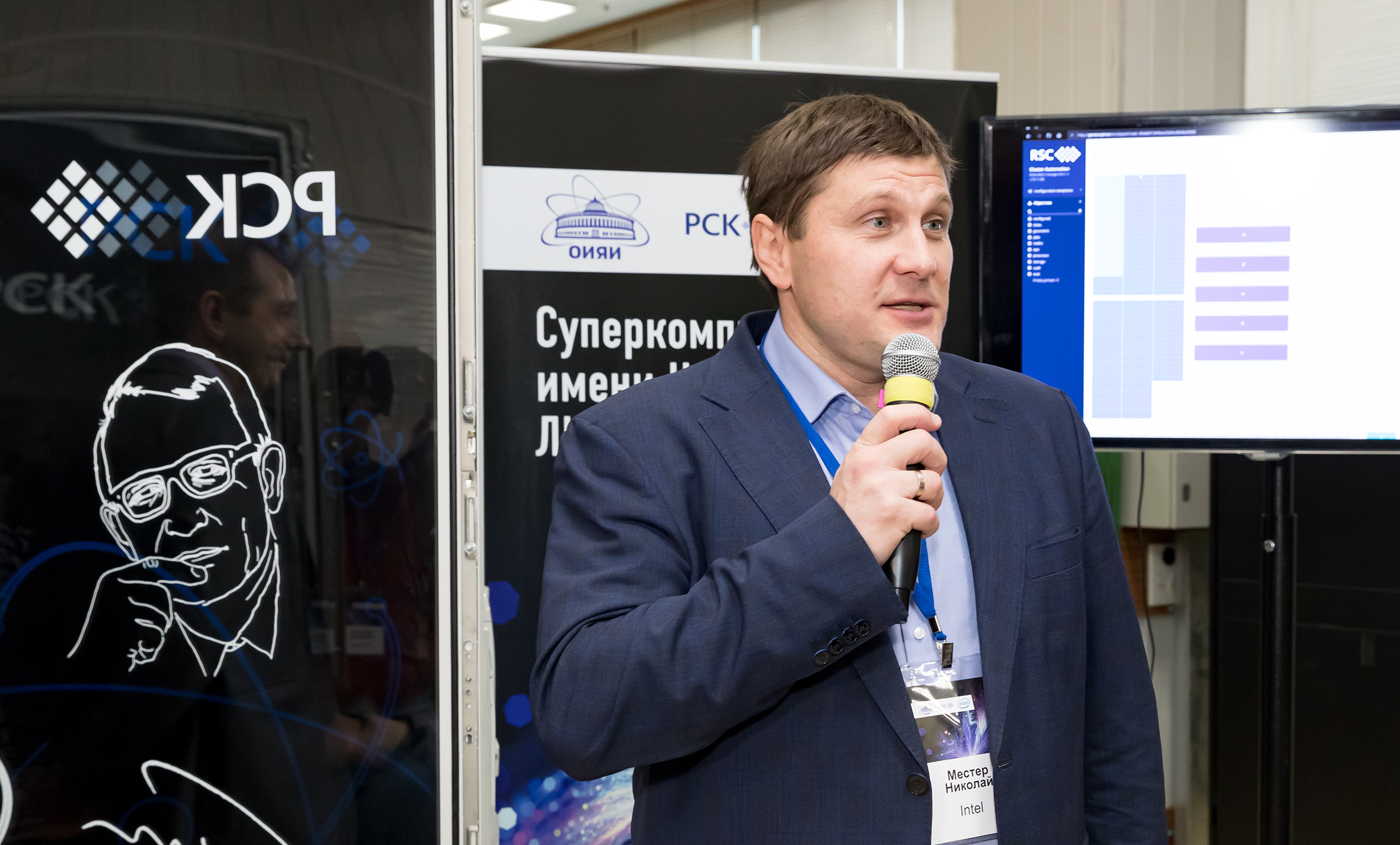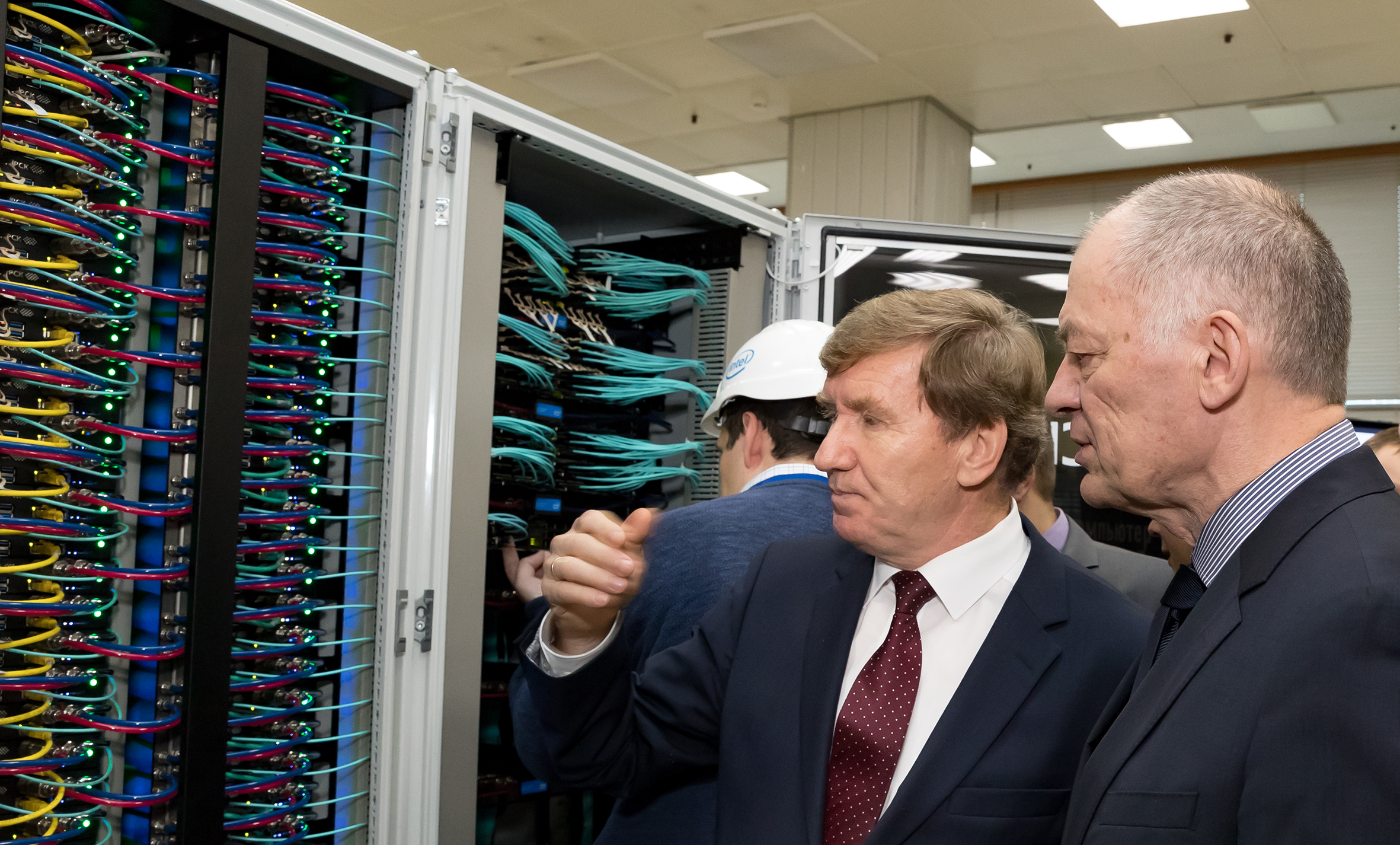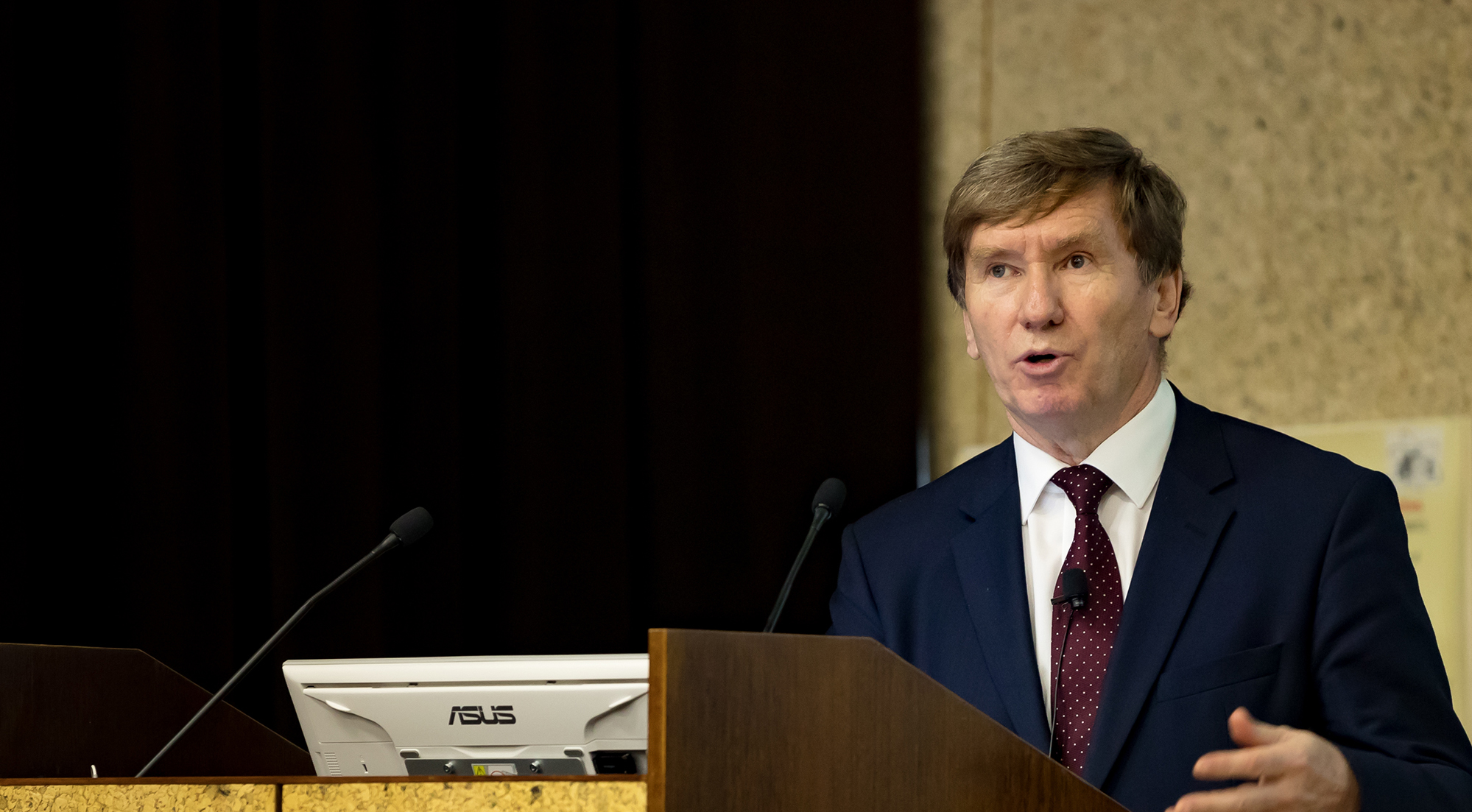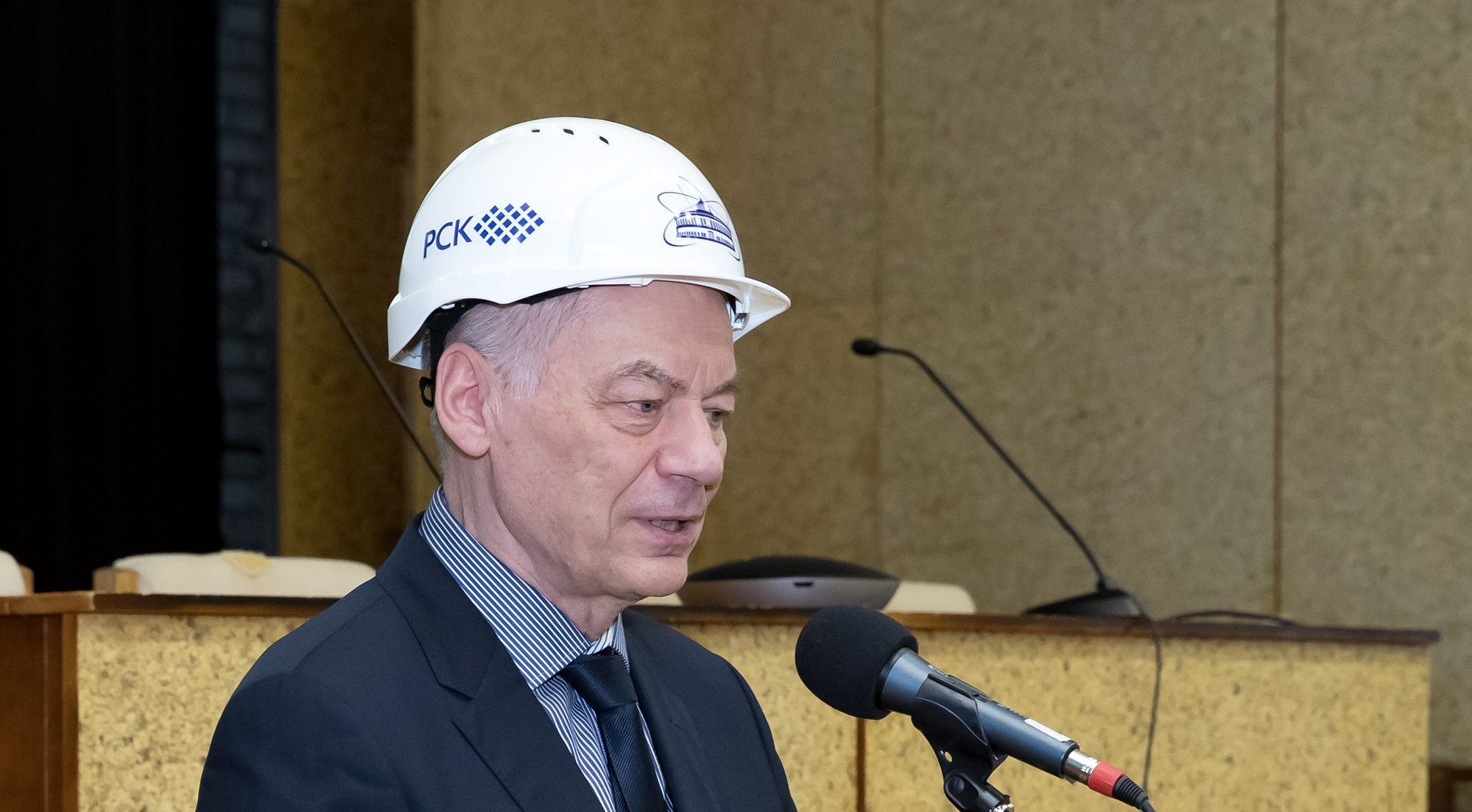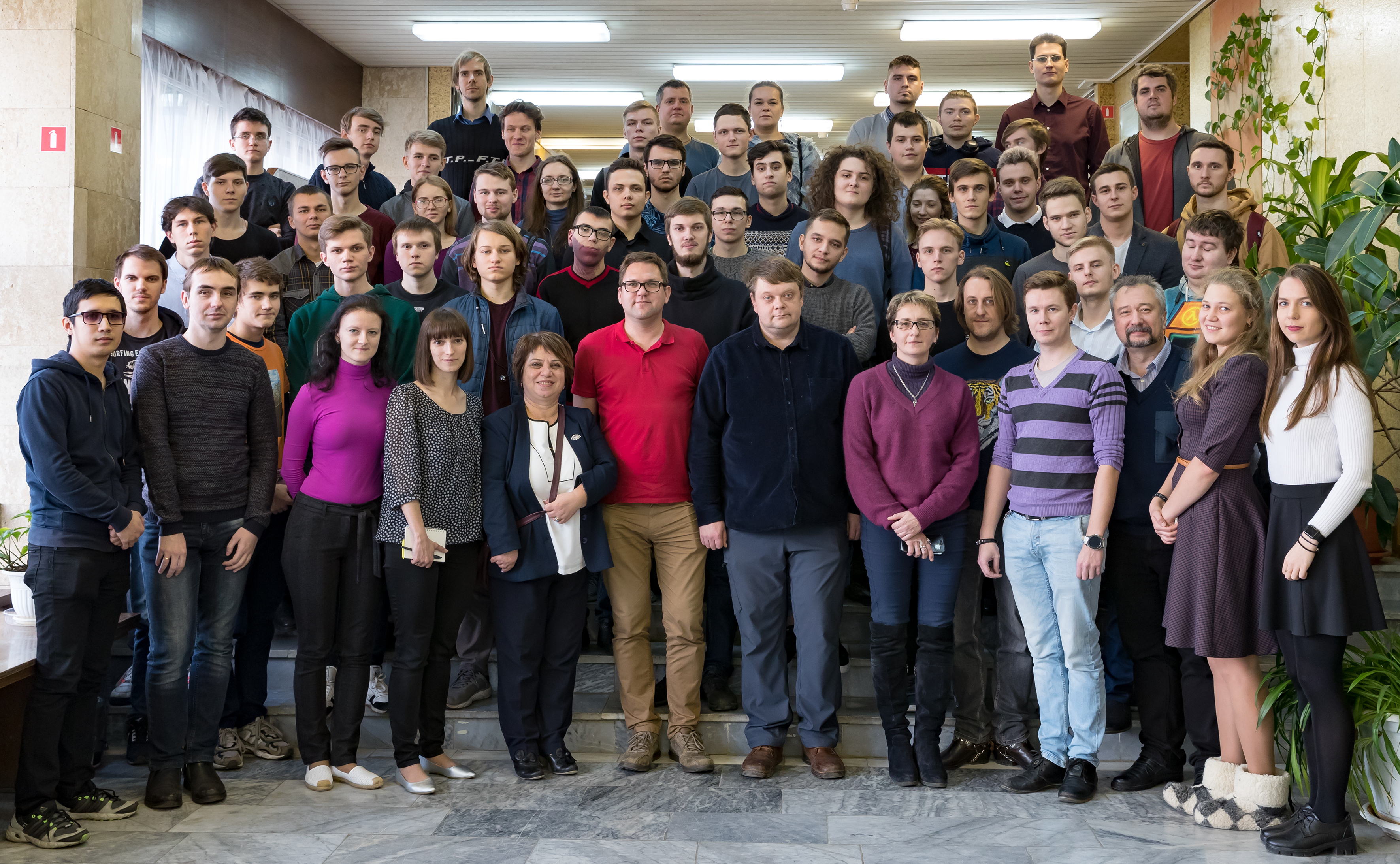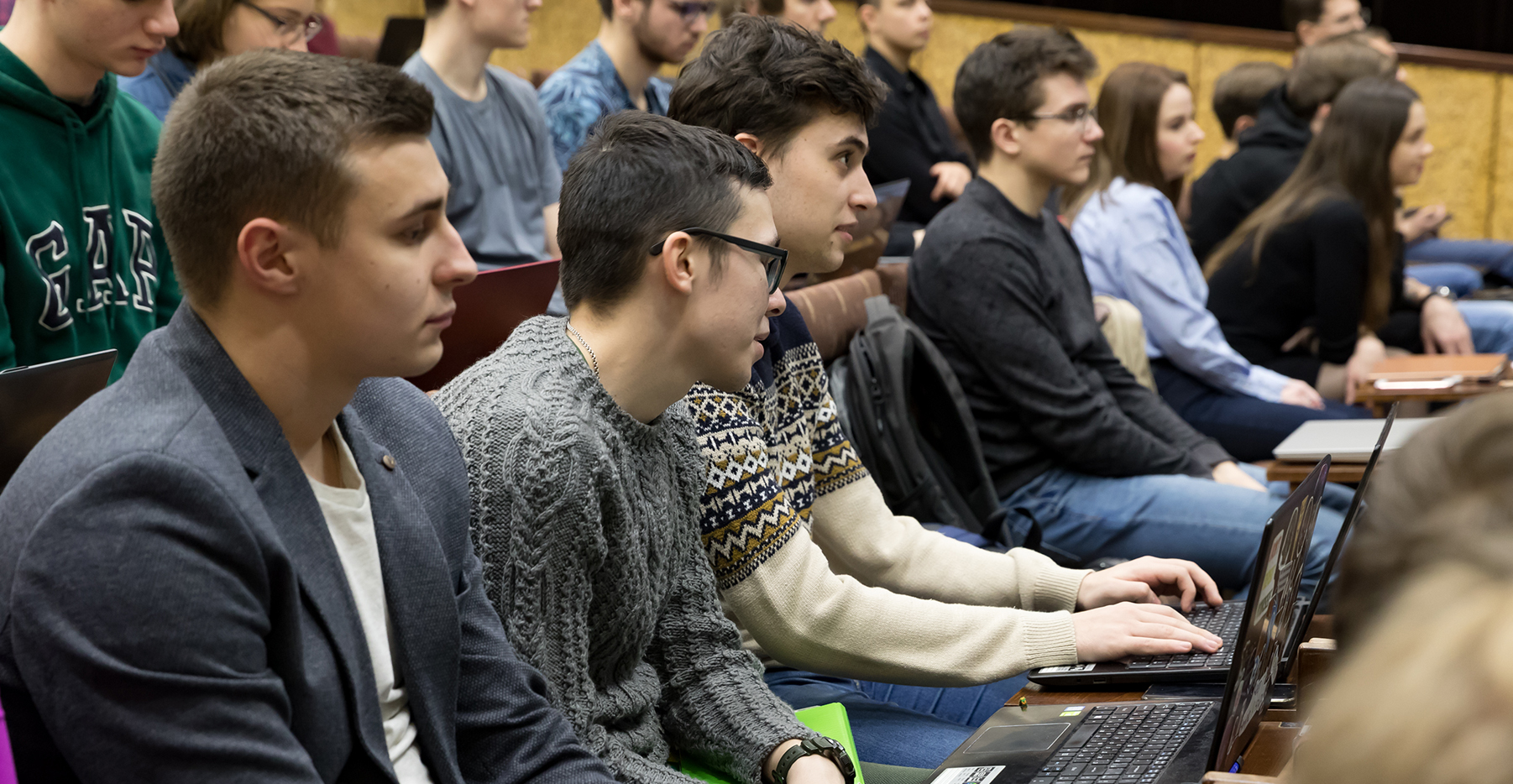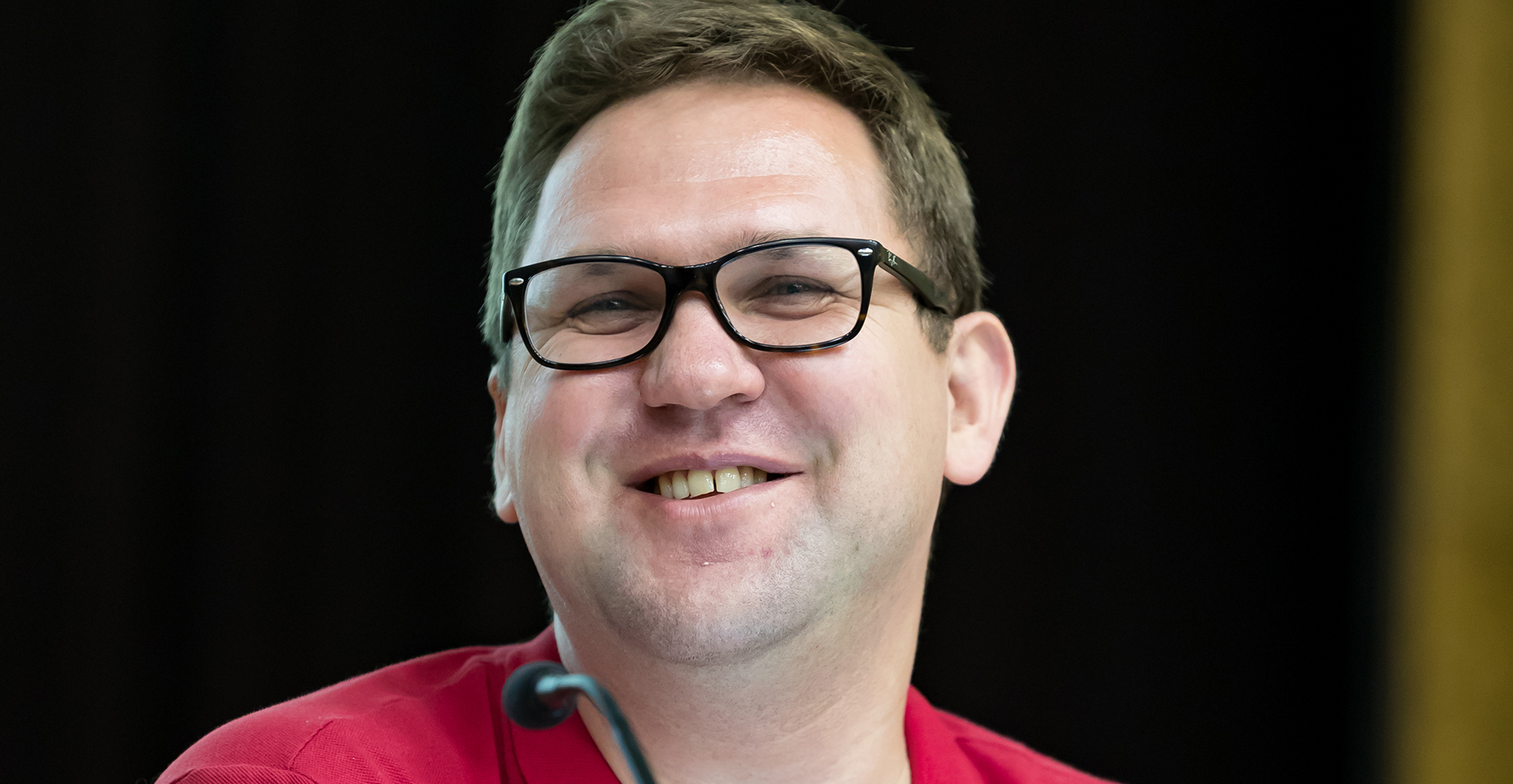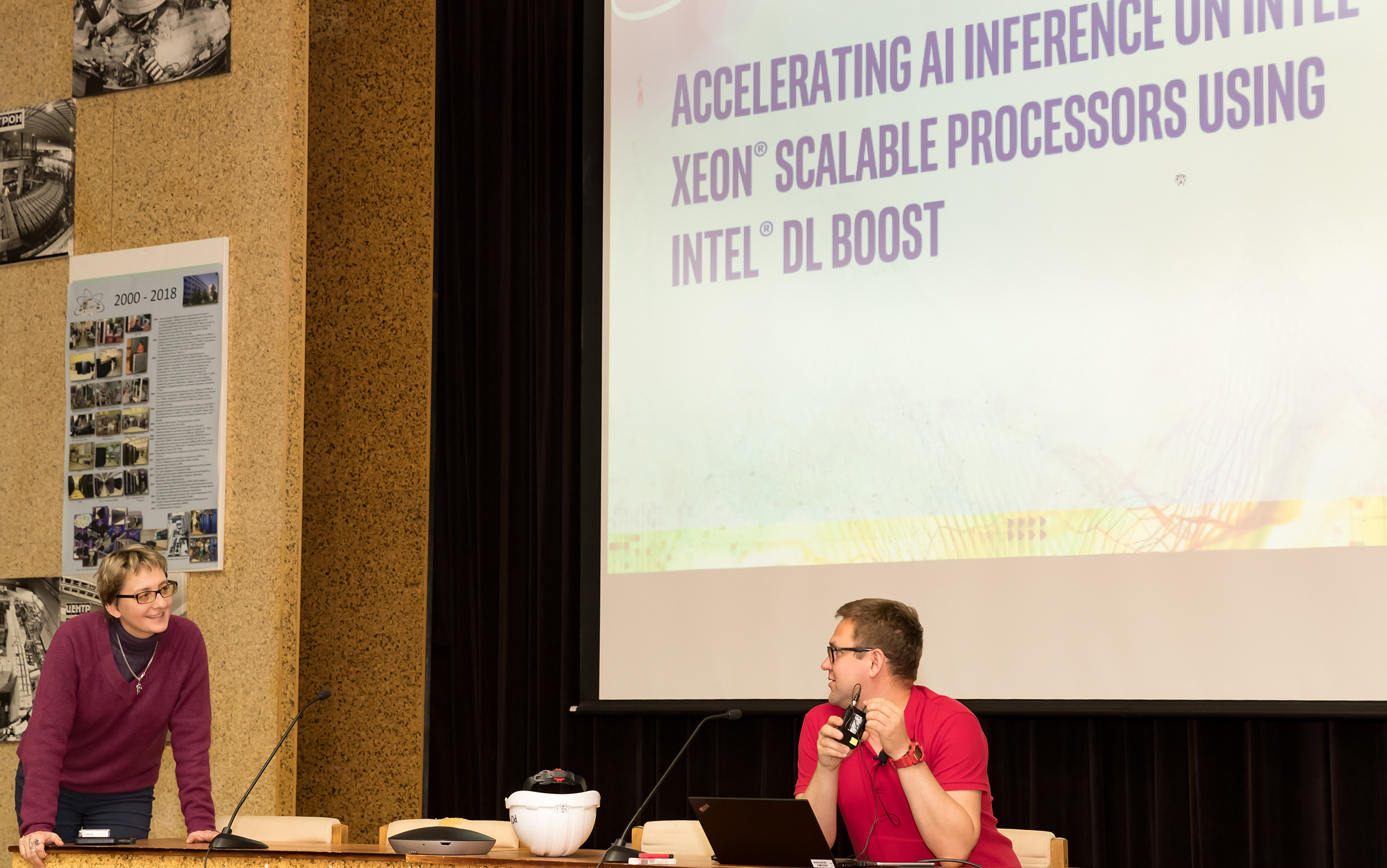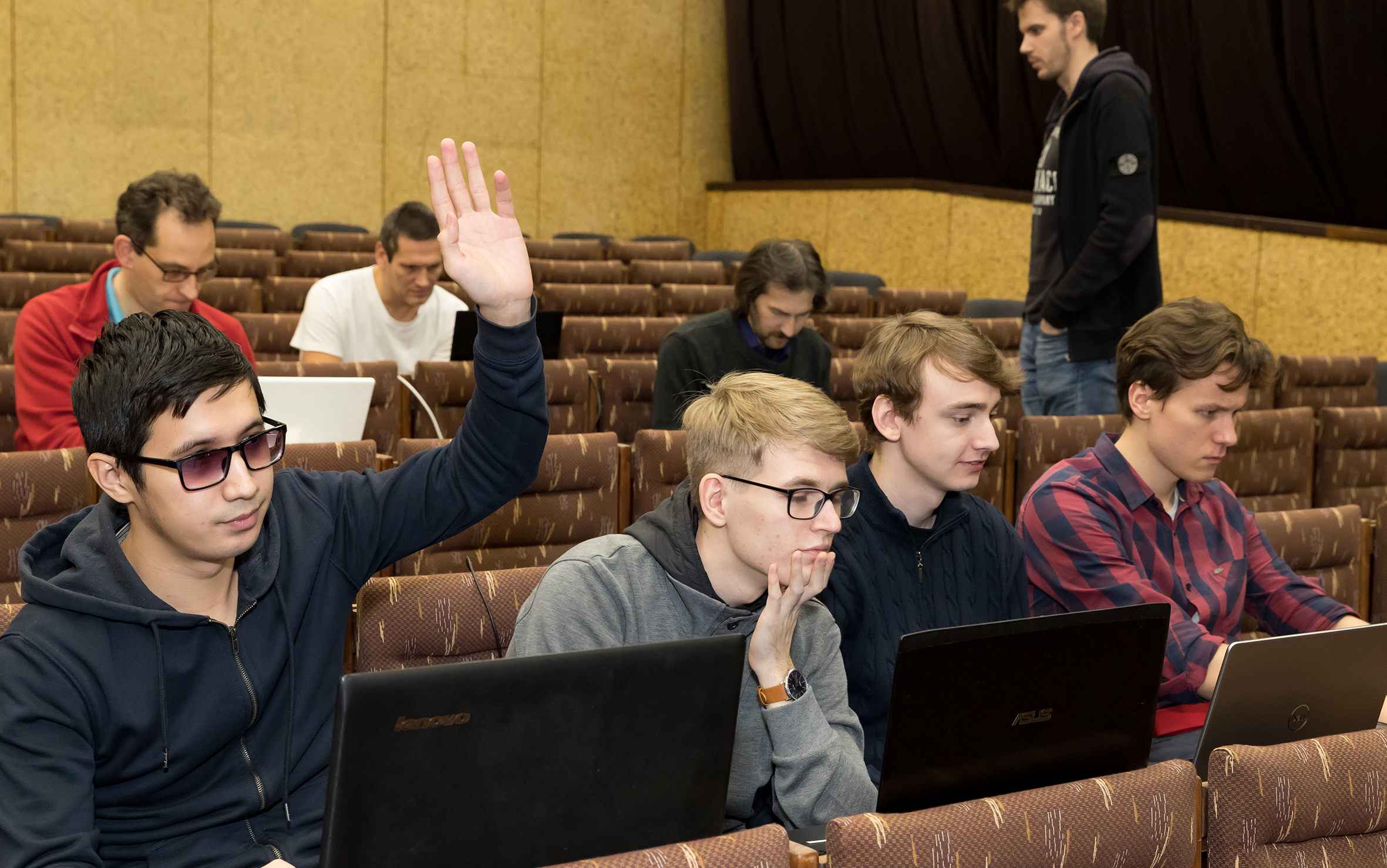Modernized supercomputer “Govorun” became three times more powerful
News, 18 November 2019
On 14 November, presentation and demonstration of the modernized supercomputer “Govorun” took place in the Laboratory of Information Technologies JINR. LIT staff members and employees of other JINR laboratories, Russian computing centres, specialists of the “Intel” and “RSC Technologies” companies gathered in the LIT computer room.
LIT Director V. V. Korenkov answered the questions of Moscow and Dubna mass media before a festive opening ceremony: “As you know, the “Govorun” supercomputer in its first modification was launched on 27 March 2018. Since then, it has become very popular among the Institute’s users, and its resources have become insufficient. We addressed to the JINR Directorate to receive additional funds for its modernization. Yesterday, we concluded the modernization: all purchased equipment was installed, set up; all the software was installed. So, we are now ready to launch the supercomputer in its new version.
The processing power of this supercomputer has been significantly increased. We have increased its ultra-fast RAM memory as far as numerous tasks demand not only the processing power but also fast memory operation. So, now we have a three-level memory: ultra-fast, fast, and slow. We also replaced all the processors installed 1,5 years ago. Thus, we have achieved new quality, and we hope our users will appreciate it in the nearest future.
Most users of the “Govorun” supercomputer are specialists of the Laboratory of Theoretical Physics as far as they solve numerous tasks that require large computing. These are, first of all, the tasks of quantum chromodynamics at the grid, modelling of complex processes. The next type of tasks is modelling of the NICA mega-science project: modelling of events for the MPD, BM@N, SPD projects. They also occupy a considerable part of the supercomputer’s resources. Now, there are new users who are engaged in radiation safety and safety evaluation. These are complicated tasks requiring much computing. Some groups engaged in neutrino physics began to use the resources of the supercomputer. The number of tasks is growing, and, most importantly, everyone wants more and more resources.
The supercomputer “Govorun” consists of three components: two are here and the third one includes GPUs. We have upgraded only the first two components. The next step will be the modernization of GPUs. After the upgrade, the integrated performance has become equal to about 1,7 petaflops, and the most demanded scalar part has three times increased. We now analyze what is most required by users and modernize it. Then, we will modernize the GPU, and this will be much easier to do.”
LIT Scientific Secretary D. V. Podgainy told us about new parameters of the supercomputer: “Today, we present the second version of our supercomputer that has been considerably developed thanks to the JINR Directorate. We switch to a new type of processor architecture by Intel – the Cascade Lake. We significantly increase the performance of our machine: the CPU is getting almost three times more powerful. All new third-generation processors have 24 cores, and there are 48 of them. So, the total number of cores is about 4,000. I cannot but boast that not a single computing centre in Russia has computing systems with such processors. “Govorun” is the largest machine in Russia; we won the 10th place in Top-50 list of most powerful supercomputers in Russia and the CIS countries.
The key feature of our facility is the opportunity of quick work with the data. We have the ultra-fast data storage system by Intel that allows recording and reading the data with the speed exceeding 300 gigabytes per second. It is a very high speed, especially in the fields of supercomputers. In fact, there are no other supercomputers in Russia and Europe with such a high speed of data processing. It is extremely important, especially when we are talking about the NICA mega-science project in which we expect a large data flow. So, the speed of its processing is crucially important. We hope that our system will help participants of the project carry out even more useful computing tasks at first, and then, after the launch of the collider, in the fields of the processing of the experimental data as well.”
JINR Vice-Director R. Lednický congratulated the LIT team jointly with their colleagues from Intel and the RSC on this remarkable event: “The progress in science is impossible today without high computing power. Analysis of data obtained at the collider will be impossible without a supercomputer.” Rector of University “Dubna” D. V. Fursaev and Coordinator of the MPD project O. V. Rogachevsky (VBLHEP) also congratulated the laboratory’s team on great success. Yuri Migal (RSC Moscow) and Nikolai Mester (Intel) introduced the technical issues to the audience. Nikolai highlighted: “It is a fascinating project as far as it is originally built on technologies nobody has used before. The convergence technology is unique, and heat is supplied and removed in the most efficient way thanks to liquid cooling. After the presentation, the seminar on new software and hardware solutions used for the supercomputer “Govorun” started. On 15 November, the seminar-workshop “Intel architectures and technologies for high-performance computing and machine/deep learning (ML/DL) tasks” was held in which staff members from scientific and computing centres of Moscow, St. Petersburg and Novosibirsk took part together with LIT specialists.
Olga Tarantina, JINR Weekly Newspaper
photos by Elena Puzynina
